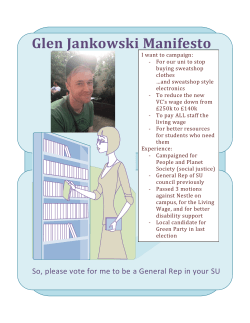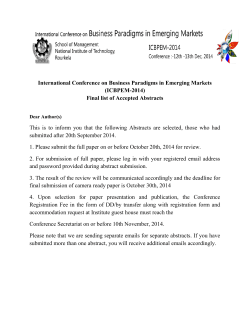
Nestle Case Study Cunningham, Xiaoya Li
Nestle Case Study Group 8: Sohum Mehta, Johannes Matthias, Rahil Poojara, Austin Cunningham, Xiaoya Li • Largest nutrition and foods company in the world • Founded and headquarterd in Vevey, Switzerland • Nestle originated in a 1905 merger of the Anglo-Swiss Milk Company which was founded by Henri Nestle in 1866 • Company grew significantly during the WWI and WWII • Operates in 86 countries • Employees 283,000 individuals. Key Figures • Revenue 107.6 billion • Operating Income 15.7 billion • Profit 10.43 billion • Total Assets 110.9 billion • Total Equity 53.63 billion (2009) • Nestle has 8500 brands with a wide range of products across a number of markets including: • coffee • bottled water • other beverages • chocolate • ice cream • infant foods • confectionary • pet food •… Growth Strategies • Forced by Switzerlands small size • Established its first foreign offices in U.S.A and Great Britain in the late 19th century • Australia, South America, Africa and Asia in the first three decades of the 20th century. • By the late 1990s, Nestle had 500 factories in 76 countries, sold products in 193 nations • 3% of its employees are located in Switzerland Emerging Markets • Does it make sense for Nestle to focus on emerging markets? • Infrastructure / Political difficulties ?! • Nestlé Emerging Markets Division imports products from more than 20 countries, and exporting products to more than 40 countries. Profits of Adversity • Nestlé's sales in emerging markets up 8.5% last year • Double the rate of the company’s total revenue • Sales from those regions totaled $33.15 Billion, more than any rival. Growth of Emerging Markets Propensity • 1 billion consumers in emerging markets will increase their incomes enough to be able to afford Nestle products within the next decade. • 1/3 of its revenue from emerging economies and aims to lift that to 45% within a decade. - CEO Paul Bulcke Population Growth Distribution Investing In Emerging Markets • “Nestle will receive $28.1 billion from Novartis for its majority stake in Alcon, the maker of Opti-Free contact lens cleaners, giving it a cash pile exceeding the $26.5 billion that Google had on its books at the end of March. The Swiss company is starting a new 10 billion-franc buyback programme, though Nestle would rather invest in its business or make acquisitions” – CFO Jim Singh said on June 22 Investing in Emerging Markets • “Nestle may purchase bottled water businesses in markets such as China” • Frits van Dijk, head of Nestle’s Asian business, on June 22. • “Acquisitions would also be considered to expand its business selling nutrition products for athletes, such as PowerBar” • Nestle Nutrition CEO Richard Laube • Start cheap and introduce luxury later Strategy to work effectively • Flexibility is another distinctive competencies which Nestle company was able to achieve to react as quickly as possible to changing environments. • As a consequence, company was able to respond to changes in local demand, cultural barriers and political fluctuation. • Ethnocentric behavior must be avoided in any circumstances in order to approach the market in the appropriated . • The Nestle company uses that approach in order to the convenient fact that the consumer is easier to reached because he is accustomed to this brand name and they think they know what they are buying. • The Nestle strategy was to be cultural awareness, which means a company should employ locals in order lower cultural barriers and resentments established by the foreigner. • Nestle believes that, the key to their success is customization rather than exaggerated globalization. Nestlé's strategy in emerging markets The Key strategy: Customization rather than globalization. Executing the strategy ● ● ● Flexibility Local adaptation A long-term focus Executing the strategy ● In Nigeria: the company hired local singers to go to towns and villages offering a mix of entertainment and product demonstrations. ● In China: Nestlé established its own distribution network, known as milk roads. Nestle Organizational Structure • Moving from Localization strategy to Transnational strategy • Includes first mover advantage, local economies, global web, economies of scale • Strong local responsiveness, but production, training, and R&D becoming centralized • Management practices – spread knowledge, create learning effects, and transfer core competencies • “Glocal” philosophy and creating value Nestle Organizational Structure • Seven global strategic business units classified by food type (worldwide production divisional structure) • Five regional units by geography (worldwide area structure) • Has created a global matrix structure • Example of a global matrix structure: Findings and Future • Strategy succeeding and applicable to markets and countries • Need for tighter integration at matrix points • Focus on healthier, more nutritious products • Raise revenue from developing countries from 33% to 45% of total revenue within 10 years • Will receive $28.1 billion for its stake in Alcon
© Copyright 2025











